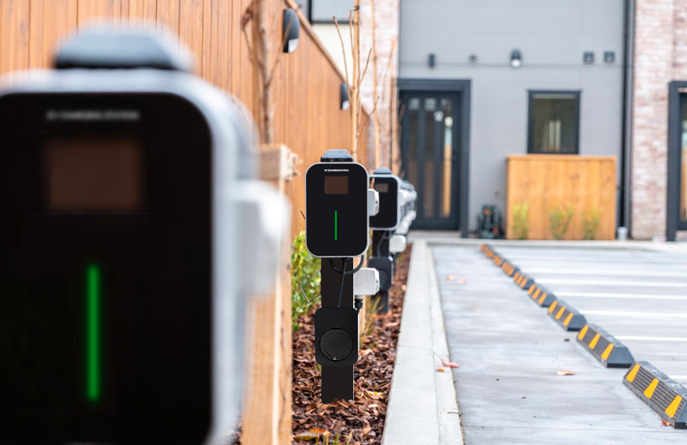charging pile: powering the future of electric mobility

as electric vehicles (evs) gain momentum worldwide, the infrastructure supporting their growth becomes increasingly important. a critical element of this infrastructure is the charging pile—the physical device that provides power to evs. understanding the role, technology, and future of charging piles is essential for businesses, governments, and consumers eager to embrace sustainable transportation.
this article dives deep into what a charging pile is, its types, benefits, challenges, and why it’s a cornerstone in the global shift towards electric mobility.
what is a charging pile?
a charging pile refers to a standalone or integrated unit that delivers electric power to recharge electric vehicles. commonly installed in public parking lots, roadside areas, commercial complexes, and residential communities, these piles facilitate convenient and accessible charging.
the term “charging pile” is often used interchangeably with “ev charger” or “charging station,” but it typically emphasizes the physical hardware unit—whether it’s a simple plug-in point or a sophisticated fast charger.
types of charging piles
charging piles vary based on power output, charging speed, and technology. broadly, they can be categorized into:
1. ac charging piles
these are the most common type and supply alternating current (ac) to the vehicle’s onboard charger. ac charging piles typically offer power outputs ranging from 3.3 kw to 22 kw, suitable for overnight or workplace charging. their slower speed makes them ideal for locations where vehicles remain parked for longer durations.
3. ultra-fast charging piles
a subset of dc piles, ultra-fast charging piles deliver extremely high power, often exceeding 350 kw. these piles significantly reduce charging time, sometimes replenishing 80% battery in under 20 minutes, thus supporting long-distance travel.
key components of a charging pile
understanding the anatomy of a charging pile helps appreciate its complexity:
- power module: converts and regulates electricity to the appropriate voltage and current
- connector: interfaces with the ev’s charging port, varying by standards like type 1, type 2, ccs, or chademo
- control unit: manages communication between the vehicle and the charging pile, ensuring safe and efficient charging
- user interface: displays status, instructions, and sometimes payment options for the user
- network module: enables remote monitoring, management, and integration with charging networks or apps
advantages of charging piles
the deployment of charging piles offers numerous benefits:
enhancing convenience for ev owners
charging piles located strategically in cities, workplaces, and public areas reduce range anxiety by providing easy access to power, allowing users to charge wherever they park.
supporting environmental sustainability
as the backbone of ev infrastructure, charging piles help reduce reliance on fossil fuels, contributing to decreased greenhouse gas emissions and cleaner air.
stimulating economic growth
building and maintaining charging pile networks create jobs and foster new business opportunities in manufacturing, installation, and energy management.
enabling smart grid integration
modern charging piles can interact with the electrical grid, helping balance demand and supply, utilize renewable energy, and reduce peak loads.
challenges facing charging pile adoption
despite their benefits, charging piles encounter several obstacles:
- high installation costs: setting up dc fast charging piles requires substantial investment in electrical infrastructure and equipment
- grid capacity: some locations may lack sufficient electrical capacity to support multiple high-power charging piles simultaneously
- standardization issues: different countries and manufacturers use varied connector standards, complicating universal compatibility
- maintenance and reliability: outdoor charging piles face wear and tear, requiring ongoing upkeep to ensure safety and functionality
innovations shaping the future of charging piles
technology advancements continuously enhance the capabilities of charging piles:
- vehicle-to-grid (v2g) technology: charging piles that enable two-way energy flow, allowing evs to supply power back to the grid during peak times, aiding grid stability
- renewable energy integration: charging piles powered by solar panels or wind turbines reduce dependence on grid electricity and lower carbon footprints
tips for businesses and property owners
installing charging piles can attract customers, employees, and residents who drive evs. here’s how businesses can maximize benefits:
- choose the right type: balance between ac and dc piles depending on user needs and site power capacity
- ensure accessibility: install charger posts in well-lit, safe, and easy-to-find locations
- offer payment options: support multiple payment methods for user convenience
- maintain regularly: schedule inspections and prompt repairs to avoid downtime
- leverage smart features: utilize monitoring tools to optimize usage and energy costs
conclusion
the charging pile is more than just a piece of hardware; it’s a key enabler of the electric vehicle revolution. as governments, businesses, and consumers push for greener mobility, the widespread adoption of reliable, efficient, and user-friendly charging piles is crucial.
from ac chargers suitable for daily parking to ultra-fast dc charging piles that enable long-distance travel, these units empower ev drivers and help build a sustainable future. overcoming challenges through innovation, strategic planning, and collaboration will ensure that charging piles become a seamless part of urban life worldwide.
embracing the charging pile today means investing in cleaner air, reduced carbon footprints, and a smarter, more sustainable transportation ecosystem for generations to come.




